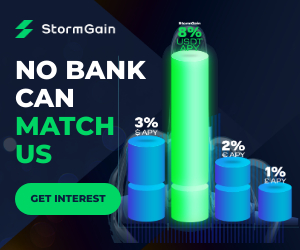Page Contents
Optimizing Website Speed? In the fast-paced digital landscape, where attention spans are shrinking and competition is fierce, website speed has emerged as a critical factor that can make or break online success. A slow-loading website can drive visitors away, resulting in lost opportunities and decreased search engine rankings. On the other hand, a fast and optimized website can enhance user experience, boost engagement, and positively impact SEO.
Optimizing Website Speed
In this blog, we will delve into the impact of website speed and performance on user experience and search rankings, and provide actionable tips for optimizing site loading times to ensure optimal digital optimization.
The Need for Speed: Understanding the Impact on User Experience
In a world where instant gratification is the norm, website visitors expect seamless and lightning-fast experiences. Studies have shown that a delay of just a few seconds in page load time can significantly increase bounce rates, leading to missed conversions and reduced revenue. Slow-loading websites frustrate users, impairing their overall experience and diminishing their trust in the brand.

So Digital optimization relies heavily on providing an exceptional user experience, and website speed plays a pivotal role in achieving this goal. A fast-loading website can engage users, reduce bounce rates, and encourage longer dwell times, ultimately contributing to increased conversions and customer satisfaction.
The Search Engine Connection: How Website Speed Impacts SEO
In the ever-evolving world of search engine algorithms, website speed has become an important ranking factor. Search engines, such as Google, recognize the significance of delivering high-quality search results to users promptly.
As a result, faster-loading websites are often rewarded with higher rankings in search engine results pages (SERPs). So search engines continuously strive to improve user experience, and slow-loading websites can hinder their efforts.
Consequently,
websites that prioritize speed and performance are more likely to be favored by search engine crawlers, leading to improved visibility and organic traffic.
Measuring Website Speed: Understanding Key Metrics
So optimize website speed, it is essential to understand the key metrics used to evaluate performance. These metrics include:
- Page Load Time: The time it takes for a web page to fully load and display its content to the user.
- Time to First Byte (TTFB): The time taken by the server to respond to a user’s request.
- First Contentful Paint (FCP): The time it takes for the first piece of content to appear on the screen.
- Largest Contentful Paint (LCP): The time it takes for the largest element on the page to become visible.

But monitoring these metrics, website owners can identify areas for improvement and implement targeted optimizations to enhance overall website performance.
Actionable Tips for Optimizing Website Loading Times
a. Optimize Image and Media Files: Compress images and videos without compromising quality to reduce file sizes and improve loading times.
b. Enable Browser Caching:
So utilize browser caching to store certain elements of the website on the user’s device, reducing the need for repeated downloads and speeding up subsequent visits.
c. Minimize HTTP Requests:
Reduce the number of elements on a web page, such as scripts and stylesheets, to minimize the number of HTTP requests required for loading.
d. Utilize Content Delivery Networks (CDNs):
So leverage CDNs to distribute website content across multiple servers globally, reducing latency and improving loading times for users in various locations.
e. Implement Lazy Loading:
Load only the visible content initially and defer the loading of below-the-fold content until the user scrolls down, improving initial loading times.
f. Optimize Website Code:
So remove unnecessary code, reduce server response times, and leverage asynchronous loading techniques for enhanced website speed.
g. Prioritize Mobile Optimization:
Given the increasing mobile usage, prioritize optimizing websites for mobile devices to ensure fast and responsive experiences.
Here are three fictional testimonials that could be used for the blog post on optimizing website speed for digital success:
Testimonials
- Alexa Rivera, CEO of Rivera Designs
“Implementing the speed optimization strategies from Sakkemoto’s blog transformed our website’s performance dramatically. By focusing on reducing load times and enhancing user experience, we’ve seen a 40% decrease in bounce rates and a significant improvement in our SEO rankings. The actionable tips were straightforward and incredibly effective.” - James Choi, Digital Marketing Manager at InnovateTech
“The insights on website speed from Sakkemoto were a game changer for us. After applying their tips on image optimization and enabling browser caching, our site speed improved by leaps and bounds. This has not only enhanced user experience but also positively impacted our conversion rates. Sakkemoto’s practical advice is invaluable for anyone looking to optimize their digital presence.” - Sarah Kim, Founder of HealthyEats
“As an online business, our website’s performance is crucial. Thanks to Sakkemoto’s expert advice on using CDNs and implementing lazy loading, our site is now faster and more efficient than ever. These changes have greatly improved our customer’s experience and have been instrumental in increasing our site traffic and sales. Sakkemoto’s guidance is both effective and easy to implement.”
Continuous Monitoring and Testing
Optimizing website speed is not a one-time task. Continuous monitoring and testing are essential to ensure that website performance remains at its peak.So regularly conduct speed tests using tools like Google PageSpeed Insights or GTmetrix to identify areas that need improvement.
Conclusion In the digital era, website speed is no longer just a nice-to-have feature;
it is a critical element that significantly impacts user experience and search engine rankings. A fast and optimized website can enhance user engagement, boost conversions, and ultimately contribute to digital optimization success.
But understanding the importance of website speed, measuring key performance metrics, and implementing actionable tips for optimization, website owners can create an exceptional digital experience that captivates users and impresses search engines alike.
Here’s a set of FAQs based on the blog post about optimizing website speed for digital success:
FAQ: Optimizing Website Speed for Digital Success
1. Why is website speed important for online success?
Website speed is crucial because it impacts user experience, engagement, and SEO rankings. Fast-loading sites reduce bounce rates and increase the likelihood of visitors staying longer and interacting more, which can lead to higher conversion rates.
2. How does website speed affect search engine optimization (SEO)?
Website speed is a ranking factor for search engines like Google. Faster websites provide a better user experience, which search engines prioritize when ranking sites. Improved speed can lead to higher visibility in search engine results pages (SERPs), driving more organic traffic.
3. What are key metrics to measure website speed?
Key metrics include:
- Page Load Time: The total time it takes for a page to fully display content to a user.
- Time to First Byte (TTFB): How long it takes for a browser to receive the first byte of data from the server.
- First Contentful Paint (FCP): The time from navigation to when the first text or image is painted on the screen.
- Largest Contentful Paint (LCP): The time it takes for the largest content element in the viewport to become visible.
4. What are some actionable tips for improving website loading times?
Some effective strategies include:
- Optimizing images and media files to reduce their size without losing quality.
- Enabling browser caching to save frequently accessed data on users’ devices.
- Minimizing HTTP requests to reduce the number of elements that need to load.
- Using Content Delivery Networks (CDNs) to distribute content delivery.
- Implementing lazy loading to delay loading images and videos until they are actually needed.
- Optimizing and cleaning up website code.
5. How can I optimize my website for mobile devices?
Prioritize mobile optimization by ensuring your website design is responsive, compressing images, minimizing redirects, and utilizing mobile-specific features like accelerated mobile pages (AMP) to enhance mobile user experience.
6. How often should I monitor and test my website’s speed?
Regular monitoring and testing are crucial to maintaining optimal performance. Conduct speed tests at least monthly or after making changes to your site, using tools like Google PageSpeed Insights, GTmetrix, or WebPageTest.
7. What tools can I use to measure my website’s speed?
Popular tools for measuring website speed include Google PageSpeed Insights, GTmetrix, WebPageTest, and Lighthouse. These tools provide insights into your website’s performance and offer recommendations for improvement.
8. Can reducing server response time improve website speed?
Yes, reducing server response time is critical for improving website speed. Optimizing your server setup, upgrading to a faster host, using efficient caching, and minimizing server processing are all effective strategies to reduce response times.
9. What is lazy loading and how does it help?
Lazy loading is a technique that delays loading of non-critical resources at page load time. Instead, these resources are loaded at the moment they are needed (typically when they enter the viewport). This speeds up the initial page load and can significantly improve user experience by saving bandwidth for both the server and the user.
10. What is a CDN and why should I use one?
A Content Delivery Network (CDN) is a network of servers distributed globally, designed to deliver content to users more quickly and efficiently by reducing the physical distance between the server and the user. Utilizing a CDN can significantly improve site speed, especially for sites with a global audience, by ensuring faster delivery of content regardless of geographic location.
Remember, in the world of digital optimization, speed truly matters, and it can be the key to unlocking unprecedented levels of online success.
digital optimization email marketing financial freedom marketing online business website traffic
Last modified: 12 April 2024










you are in reality a just right webmaster The site loading velocity is incredible It seems that you are doing…